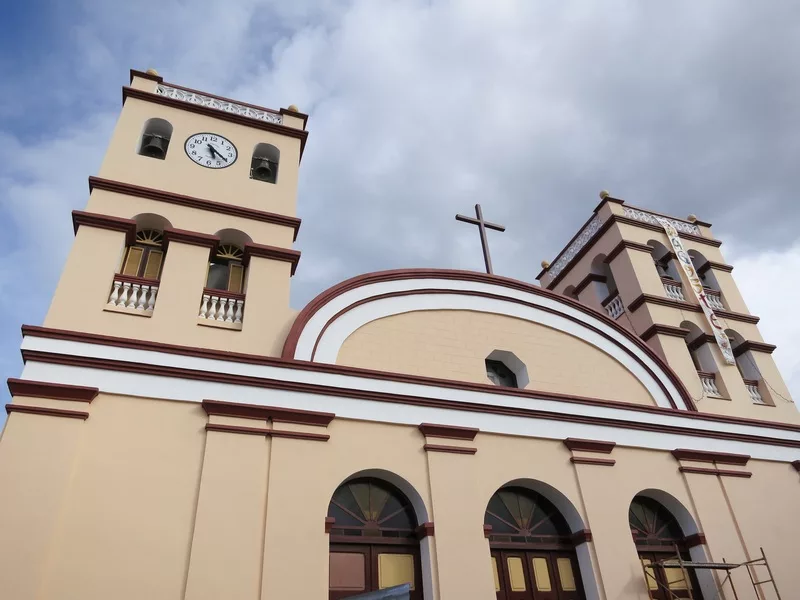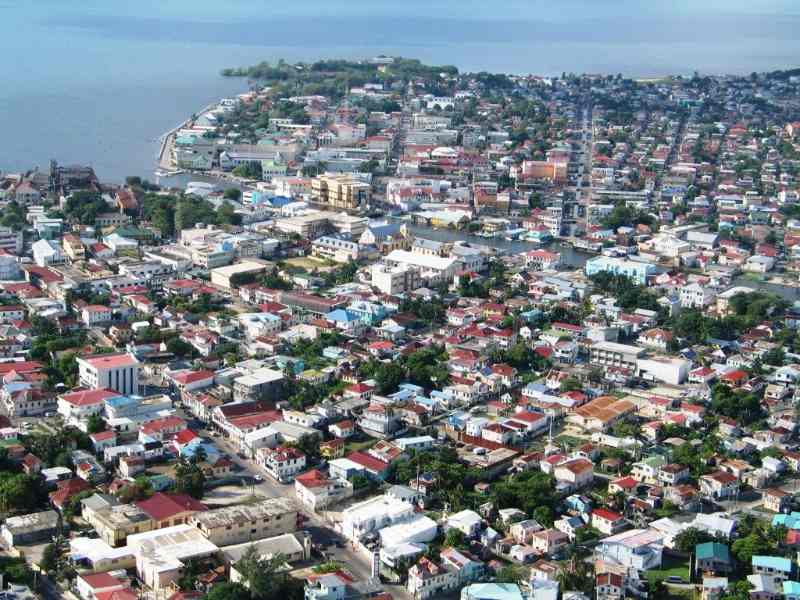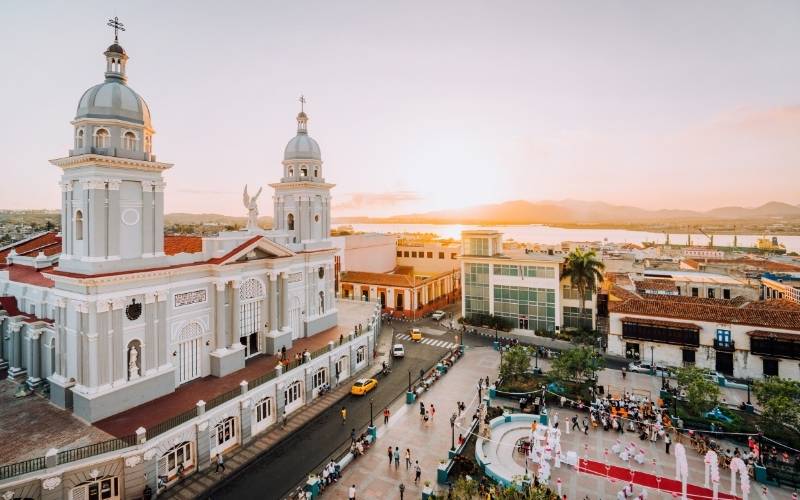
Home » Learn All About The Faith and Religion of Cuba
Table of Contents
Historically, the majority of the Cuban population adhered to Christianity, specifically the Roman Catholic faith; but, in more recent decades, the number of people who do not practice any religion has significantly increased.
Syncretism has had a significant impact on Cuban Catholicism, which has resulted in some major modifications and influences. Santera is a type of syncretic religion that combines elements of Catholicism, the Yoruba religion of the African slaves, and some Native American traditions. It is comparable to the Umbanda religion of Brazil and has received some degree of official support. Santera is practiced in a number of countries.
It is estimated by the Roman Catholic Church that sixty percent of the population is Catholic; yet, of those sixty percent, only five percent of them consistently attend mass, while other sources indicate that just one point five percent of the population does so.
Religious Demography of Cuba
Only 34% of Cubans responded that they were religious in a study that was sponsored by Univision in 2015. Forty-four percent of Cubans indicated they did not practice any religion, while nine percent of respondents did not respond. It is believed that there is five percent of people are members of Protestant churches.
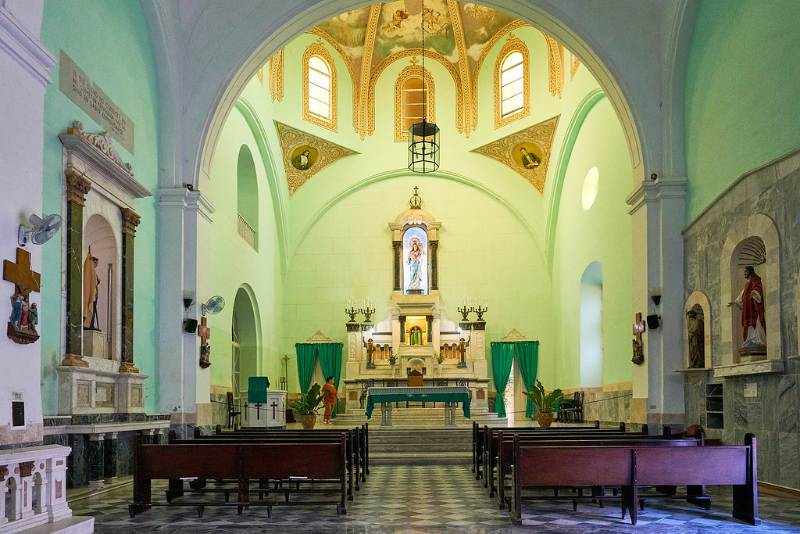
“Immerse Yourself in the Soul-Stirring Stories and Sacred Sites That Define Cuba’s Faith. Book Your Adventure Today!“
Sacred Churches of Cuba
These churches include Baptists, Pentecostals, Seventh-day Adventists, Presbyterians, Anglicans, Methodists, Lutherans, and members of the Religious Society of Friends (Quakers). Other Christian denominations include the Greek Orthodox Church, the Russian Orthodox Church, the Jehovah’s Witnesses, and the Church of Jesus Christ of Latter-day Saints. In recent decades, Protestantism has experienced some growth. Other Christian denominations include these.
Non-Christian minority religions in Cuba include Hinduism and Chinese folk religion, which each account for 0.2% of the population. Other non-Christian minority religions in Cuba include the Bahá Faith, Buddhism, Judaism, Islam, and Neoreligions, all of which have non-negligible numbers of followers but account for less than 0.1% of Cuba’s population.
Hinduism and Chinese folk religion each account for 0.2% of the population. In addition to the information presented above, 18.0% of Cubans identified as agnostics, and 5.1% of Cubans identified as atheists.

Cuba; a Home of Multiple Practicing Religions
Cuba is home to a number of religions that are mostly of African cultural background yet share elements of one another. Some sources suggest that as much as 80 percent of the population consults with practitioners of faiths having roots in West Africa, such as Santeria, Palo, or Cuban Vod, according to a report that was compiled by the United States Department of State. The Yoruba were one of the African peoples who were brought to Cuba between the 16th and 19th centuries in order to work on the sugar plantations. The religion of Santera arose out of the traditions of the Yoruba.
The fact that Santera incorporates aspects of both Christianity and West African traditions made it possible for slaves to continue to practise their native religions while giving the appearance of being devout Catholics. La Virgen de la Caridad del Cobre, often known as Our Lady of Charity, is the patron saint of Cuba in the Catholic religion. She is held in very high esteem by the Cuban people and is considered to be a symbol of Cuba. She is worshipped as the Santera version of the goddess Ochn in that religion.
On September 8 of each year, Cubans gather to commemorate “La Virgen de la Caridad del Cobre,” a significant religious holiday that is observed on the island. Palo Monte and Abakuá are two more religions that are practised here; both of these cults conduct a significant portion of their ritual in African languages.
Despite the fact that there were fewer limitations placed on religious practice in Cuba compared to other communist nations such as the Soviet Union or China, the majority of the population’s atheism was most likely the result of the communist environment’s emphasis on Marxist-Leninist atheism.

According to estimates provided by the Pew Forum in 2010, the majority of Cubans (59.2%) identify as Christians, while 23% are not affiliated with any religion, 17.4% practise folk religions (such as santeria), and the remaining 0.4% belong to other religions. In a study conducted in 2015 and funded by Univision, 44% of Cubans said that they did not practise any religion, while 9% of respondents did not provide an answer. Only 34% of respondents identified as Christians.
Cuba is a state that officially practises secularism. During the 1980s, there was an expansion of individuals’ rights to freely practise their religion, which culminated in a constitutional amendment in 1992 that removed the atheistic label from the state.
Roman Catholicism, the world’s greatest religion, can trace its roots back to the Spanish colonisation of the Americas. Despite the fact that less than half of the people identified as Catholics in 2006, Catholicism continues to be the predominant religion in the country. In 1998 and 2011, respectively, Pope John Paul II and Pope Benedict XVI travelled to Cuba. Pope Francis was there in September of 2015. As a sign of compassion and goodwill, the Cuban government granted amnesty to all detained individuals in advance of each papal visit.
As a result of the government’s decision in the 1990s to ease limitations on house churches, Pentecostalism had a massive growth spurt, with some groups claiming to have as many as 100,000 members. On the other hand, Evangelical Protestant denominations, which are grouped under the umbrella of the Cuban Council of Churches, continue to be far more active and influential.
Syncretisms of varying kinds also play a significant role in defining the religious landscape of Cuba. Santera is a syncretic religion that combines Catholicism with a variety of predominantly African religions and cults. It is frequently followed in conjunction with Christianity. The Virgin of Cobre, also known as “La Virgen de la Caridad del Cobre,” is considered to be the patron saint of Cuba by the Catholic Church and is also considered to be an important emblem of Cuban culture. She is worshipped as the goddess Oshun in Santeria, which is a form of syncretism.
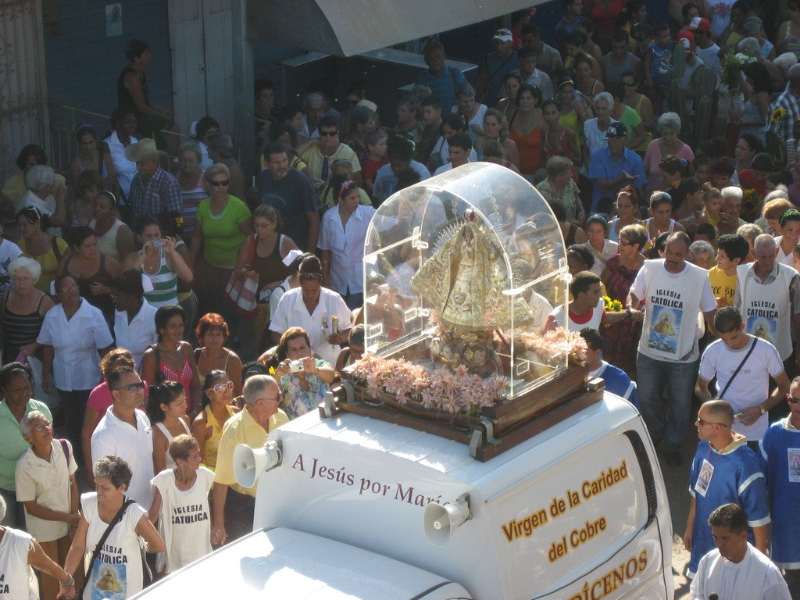
“Let the echoes of prayers guide your steps as you unravel the cultural tapestry woven within these hallowed walls. From ornate facades to tranquil courtyards, each church holds stories waiting to be heard.”
The Afro-Cuban Religions
A classification of the adherents of Afro-Cuban religions revealed that the majority of people who practised Palo Mayombe had black or very dark brown skin, while the majority of people who practised Vod were of medium brown and light brown skin, and the majority of people who practised Santeria had light brown or white skin.
There are also smaller populations of Muslims, Baha’is, and Jews in Cuba.
The Jewish population in Cuba was estimated to number 500 in 2012. Jorge Armando Pérez, a humanitarian and novelist, is one of several well-known Cuban religious personalities who have operated outside of the country.
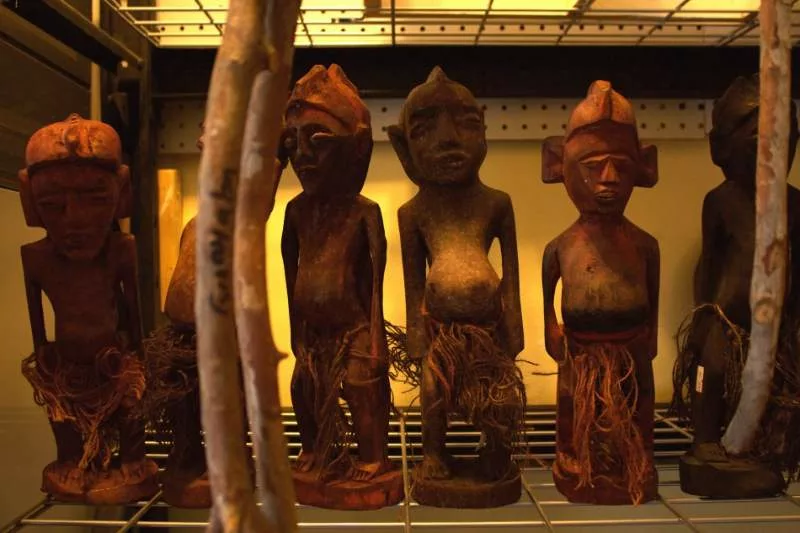
Conversion of Religions
According to research that was published by the Pew Research Center in 2011, there were around 10,000 Muslims living in Cuba at the time. This represented 0.1% of the total population. As of the year 2012, the majority of Cuba’s estimated 10,000 Muslims were new converts to Islam.
At one point in time, a significant number of Muslim students travelled to the island nation of Cuba with the intention of attending one of Cuba’s numerous esteemed educational institutions. It was estimated that there were between 1500 and 2000 students. Pupils of Pakistani descent were among the members of that organisation, among other students. It is well known that the majority of people who travelled to Cuba for educational purposes were Pakistani students, who numbered approximately 936 in total.
Sheikh Muhammad bin Nassir Al-Aboudy, the Assistant Secretary-General of the Muslim World League (MWL), travelled to Cuba in 2001 in order to seek permission from the Cuban government to establish an Islamic organisation that would support Cuba’s Muslim community. He was successful in obtaining this permission and establishing the organisation.
Constructing mosques and fostering cultural awareness of Islam among members of the Muslim community would also be on the agenda for the organisation that is being suggested. As of the month of July 2015, the Turkish Religious Affairs Foundation had established the first prayer space for Cuban Muslims, and the construction of the first mosque in Cuba was being funded by Turkey.
KEY TAKEAWAYS ...🛪
Cuba is a great country in terms of religious tolerance and freedom making it a must visit for all!

